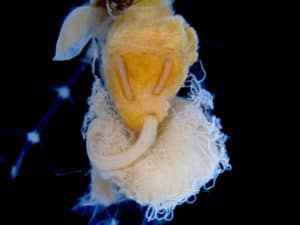
It has been nearly four years since I began working for Penn State University under the supervision of Dennis vanEngelsdorp. I have done just about every task, duty, or job in our lab since then. My responsibilities as a technician range from collecting and analyzing samples to shipping and receiving samples, as well as cataloging, processing, and analyzing them.
Job responsibilities have come and gone over the days, weeks, months, and years as an employee of the University. Just as I learned a new skill Dennis was always there pushing me to learn another and another and another…
One of the duties I was originally charged with undertaking was the ability to dissect honey bee workers for the purposes of conducting autopsies on the carcasses of honey bees collected during field work. It was a skill not easily learned; the success of which was mostly dependant on my desire to do something that, at the time, no one else was doing. I quickly took a liking to the tedious task and after four years I am proud to say that I have dissected the abdomens of well over 20,000 honey bee workers.
The overall goal of the dissections and the autopsies was focused on examining tissues housed within the abdomen of the female workers. Examination of these tissues aimed to look for signs or symptoms of pathologies using light microscopy. During the onslaught of CCD Dennis and I hoped that we might be able to identify a common symptom in the tissues of the workers that would lead us to a causative agent of the disorder. A physical marker or a symptom, if you will, that could link or distinguish non CCD bees from CCD bees.
It has been four years and 20,000 dissections later and we do not have a single common factor that would serve as a conclusive marker for CCD. Although our work on the autopsies is far from over there has certainly been a lot of discoveries. Often time’s research is not about what you can prove but what you can disprove. If nothing else the autopsies has helped us disprove many leads which in turn brings about new avenues to explore and thus the cycle goes on.
Pictured above is the gastro-intestinal tract of a honey bee worker that I dissected and photographed last autumn.
Mike Andree